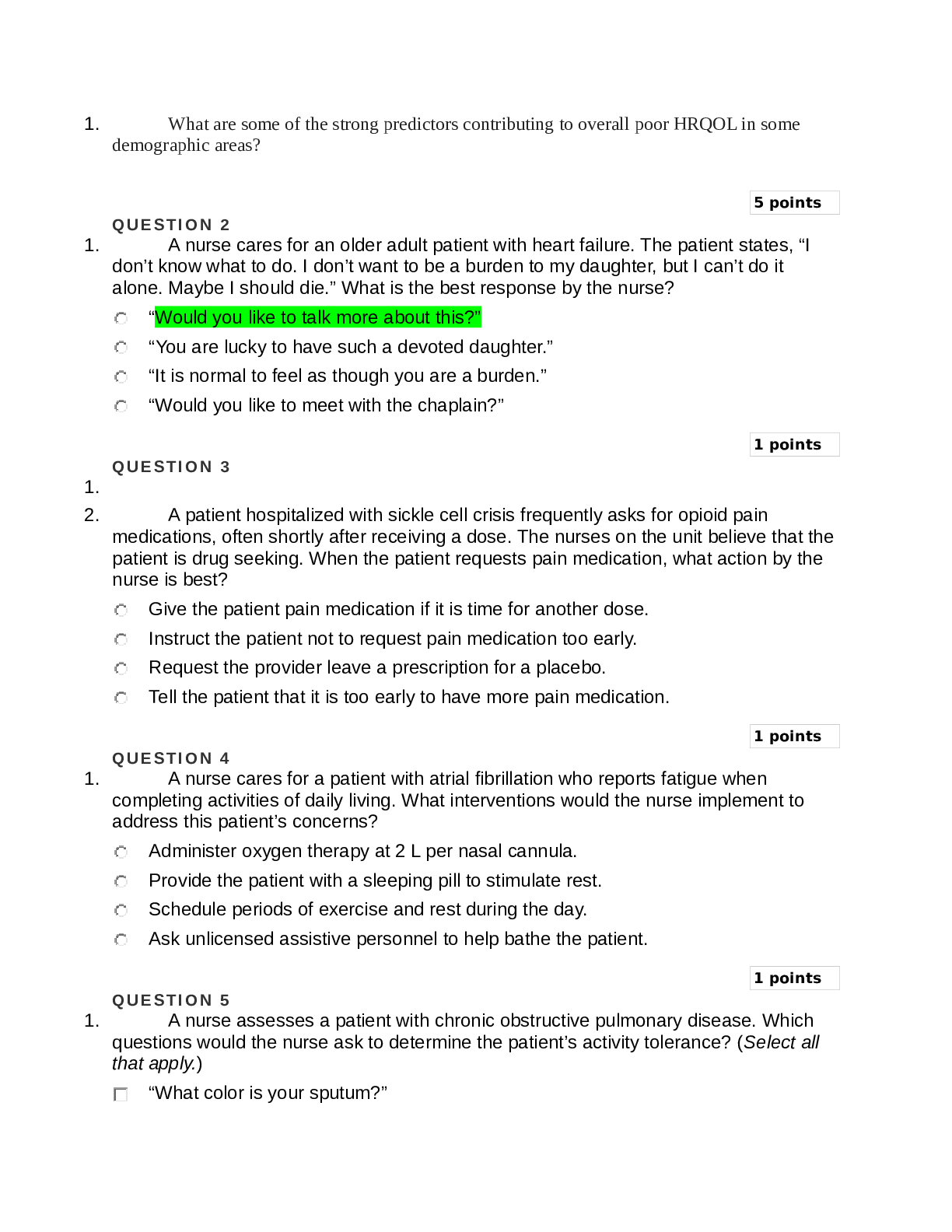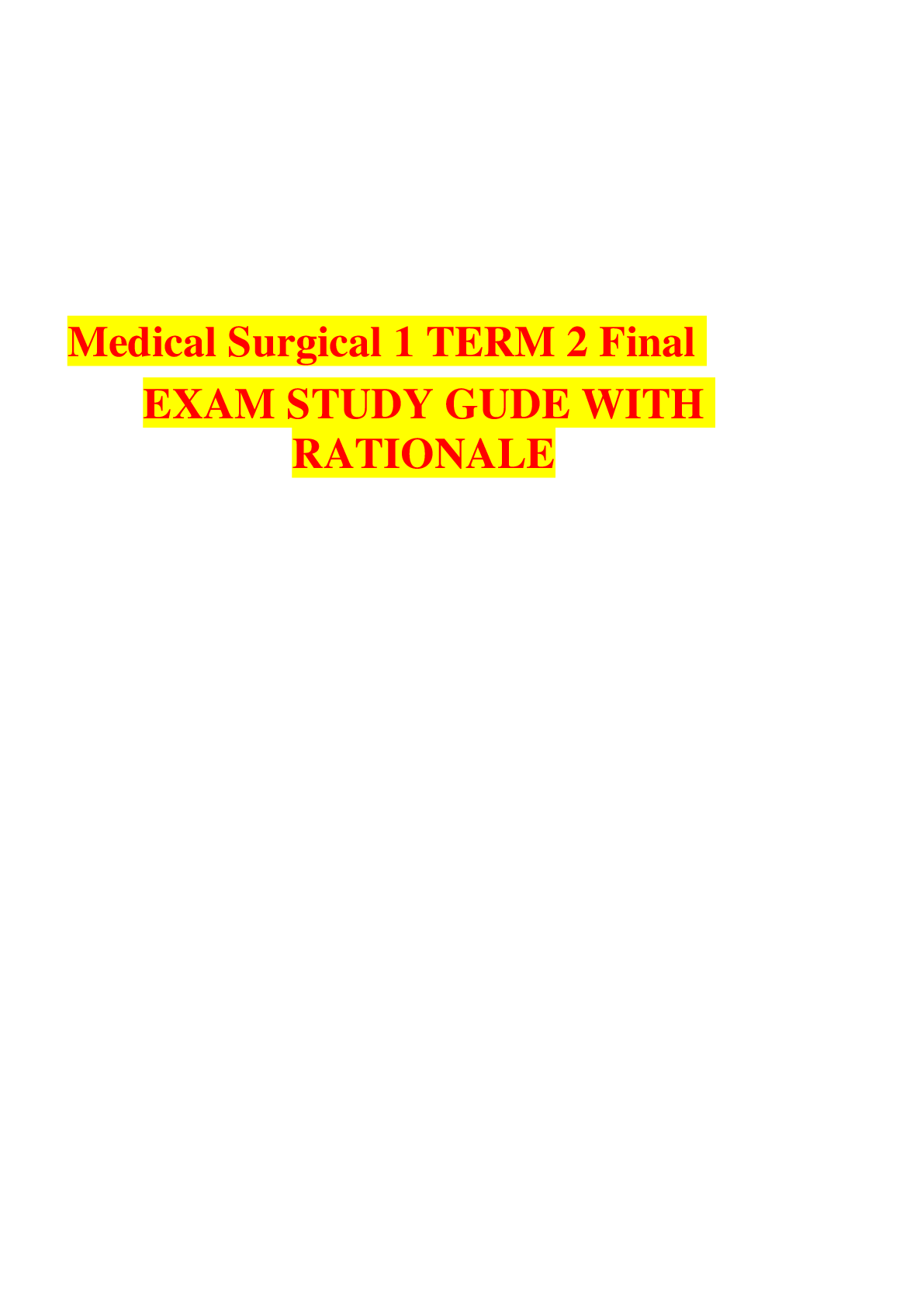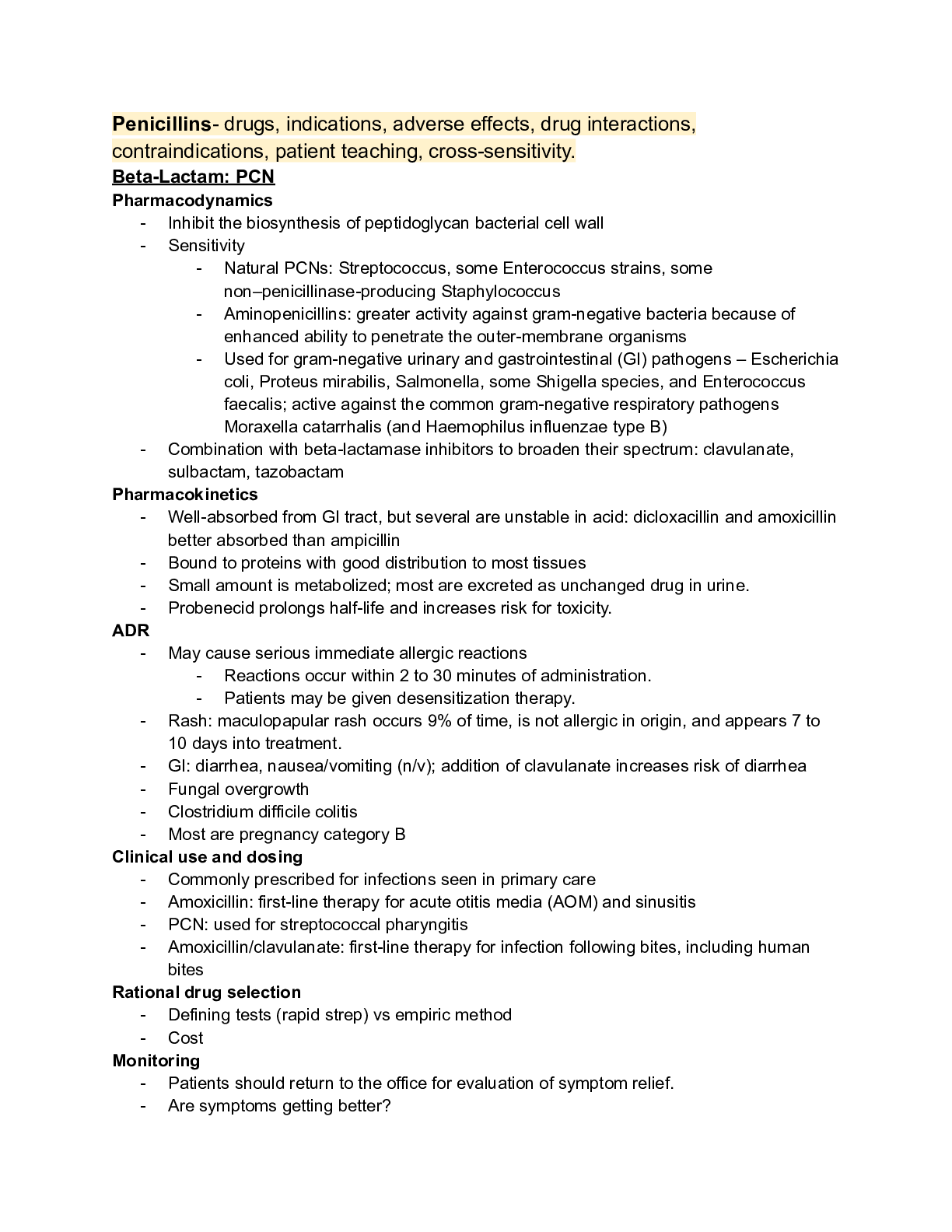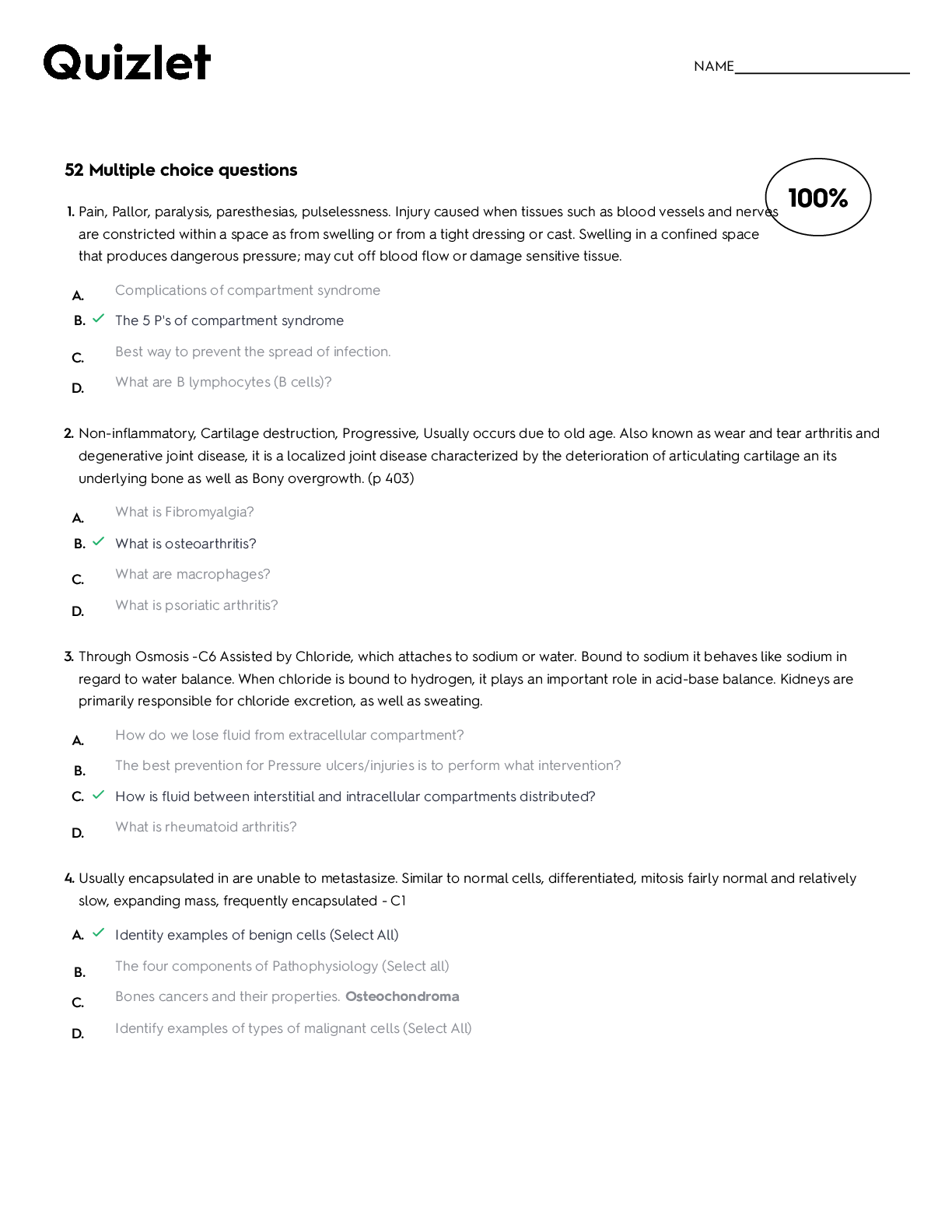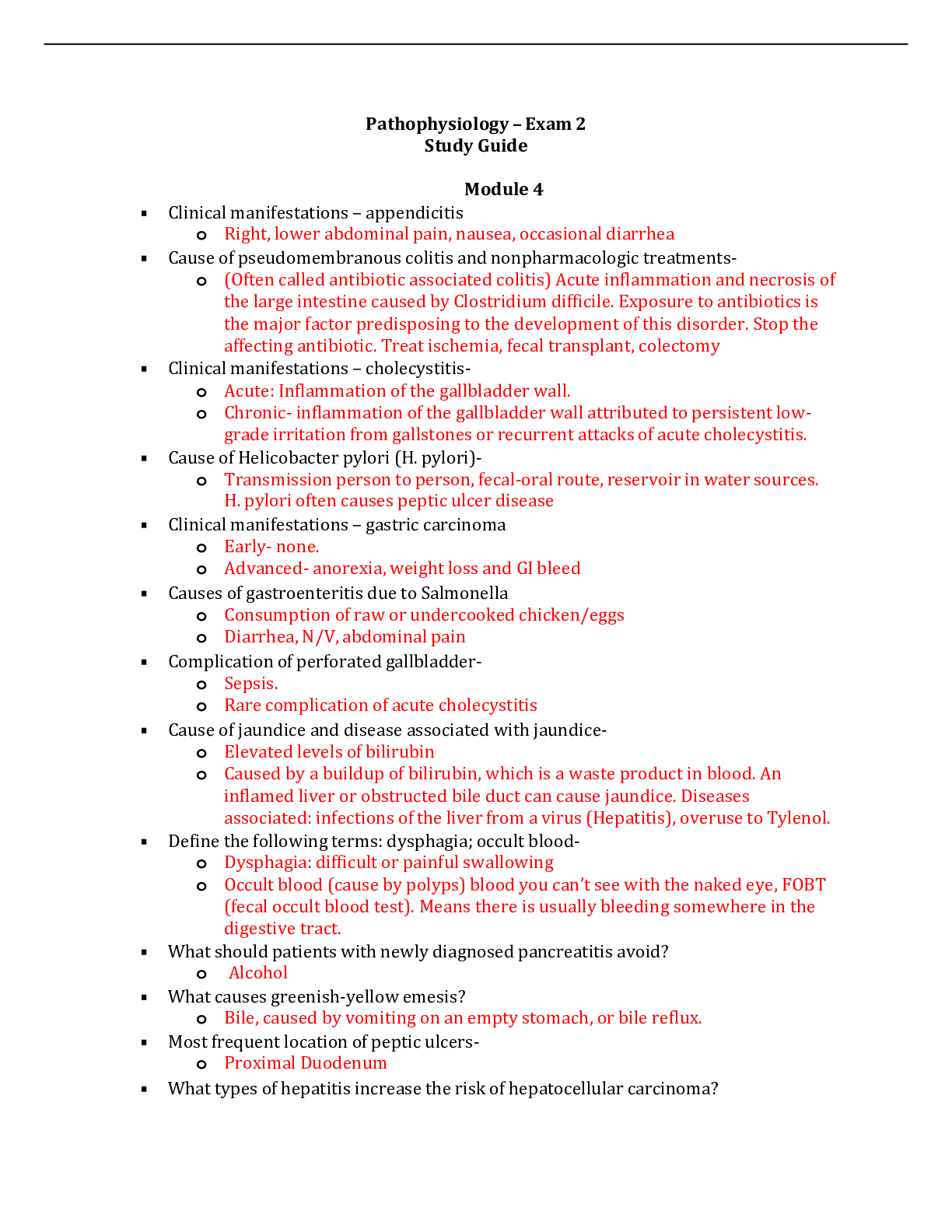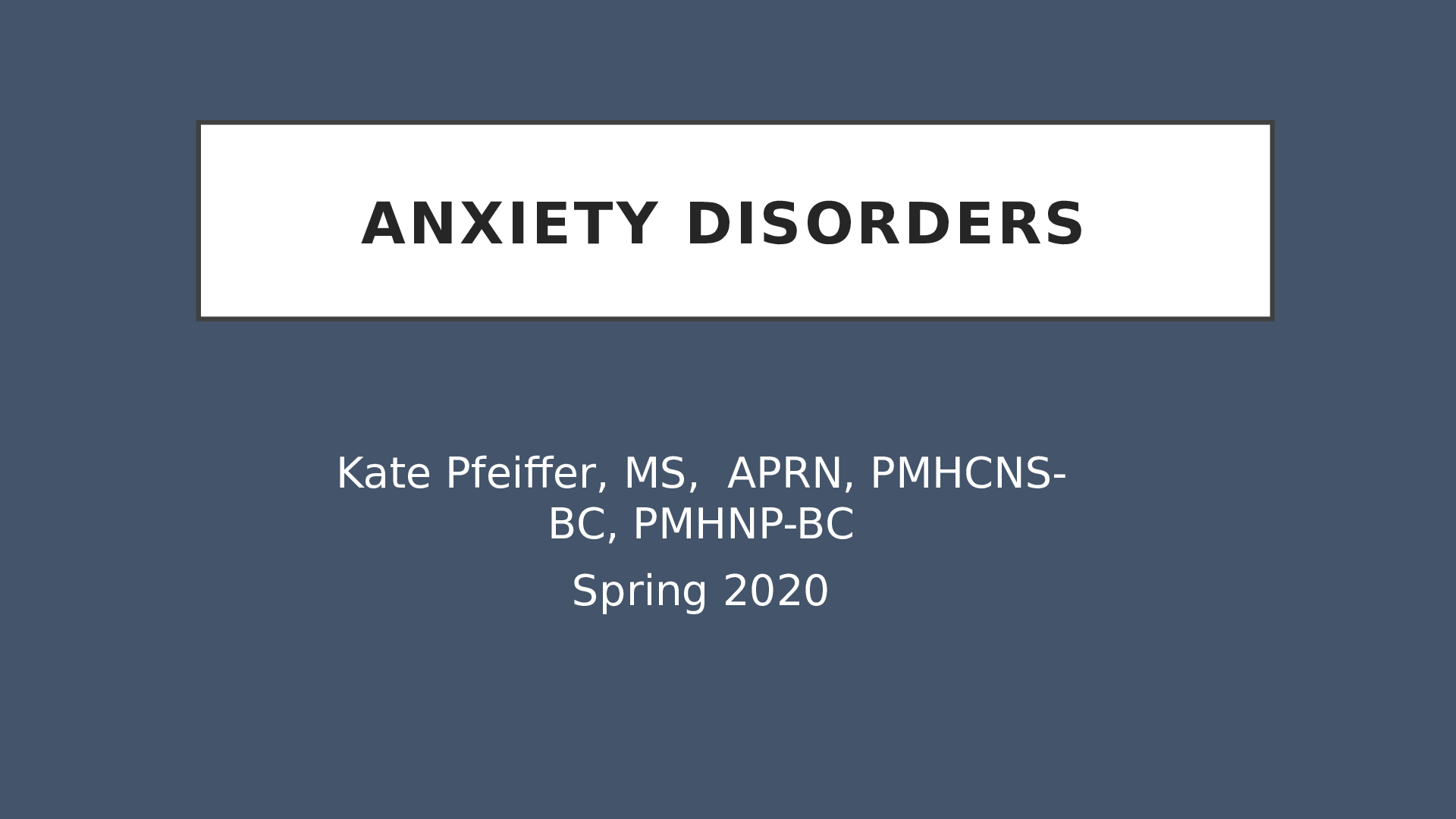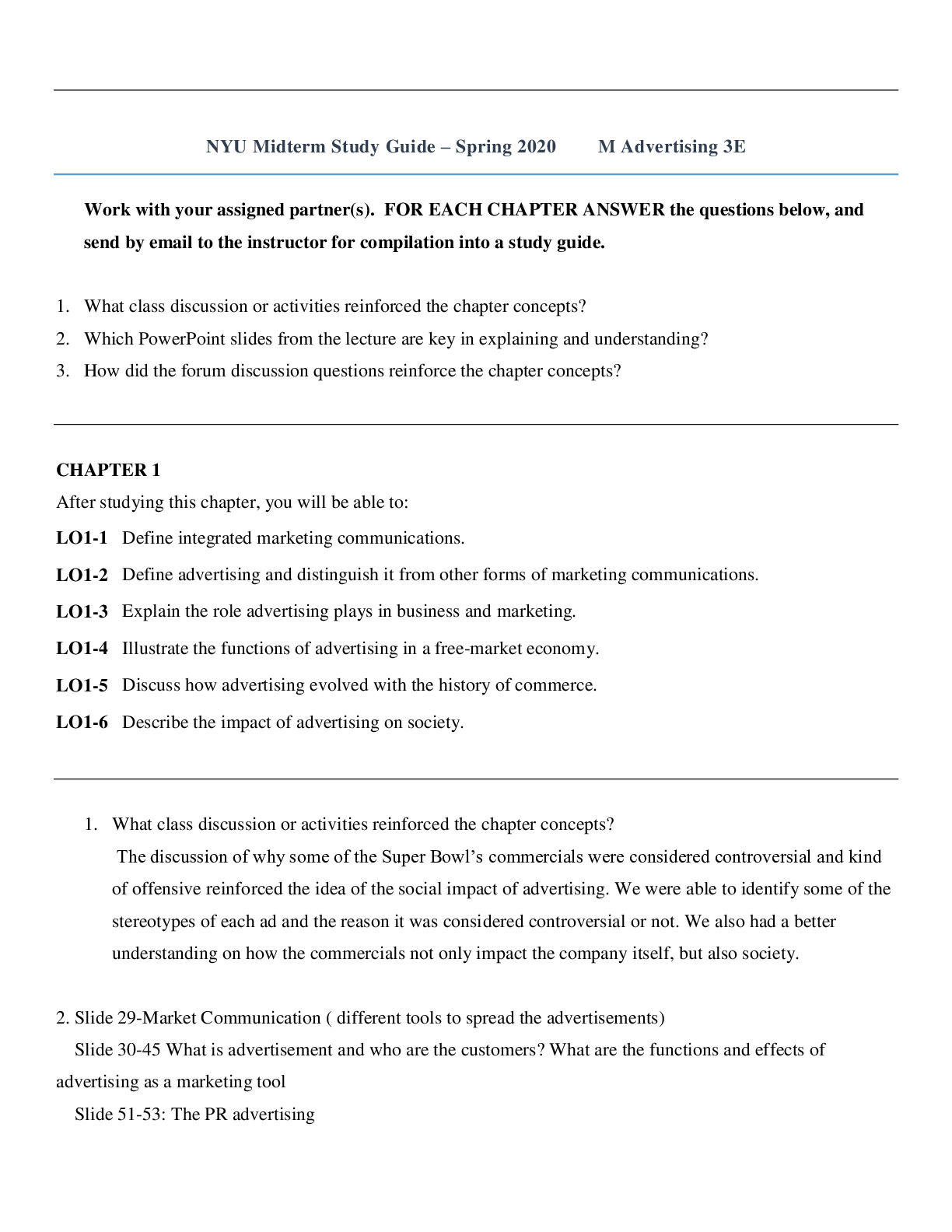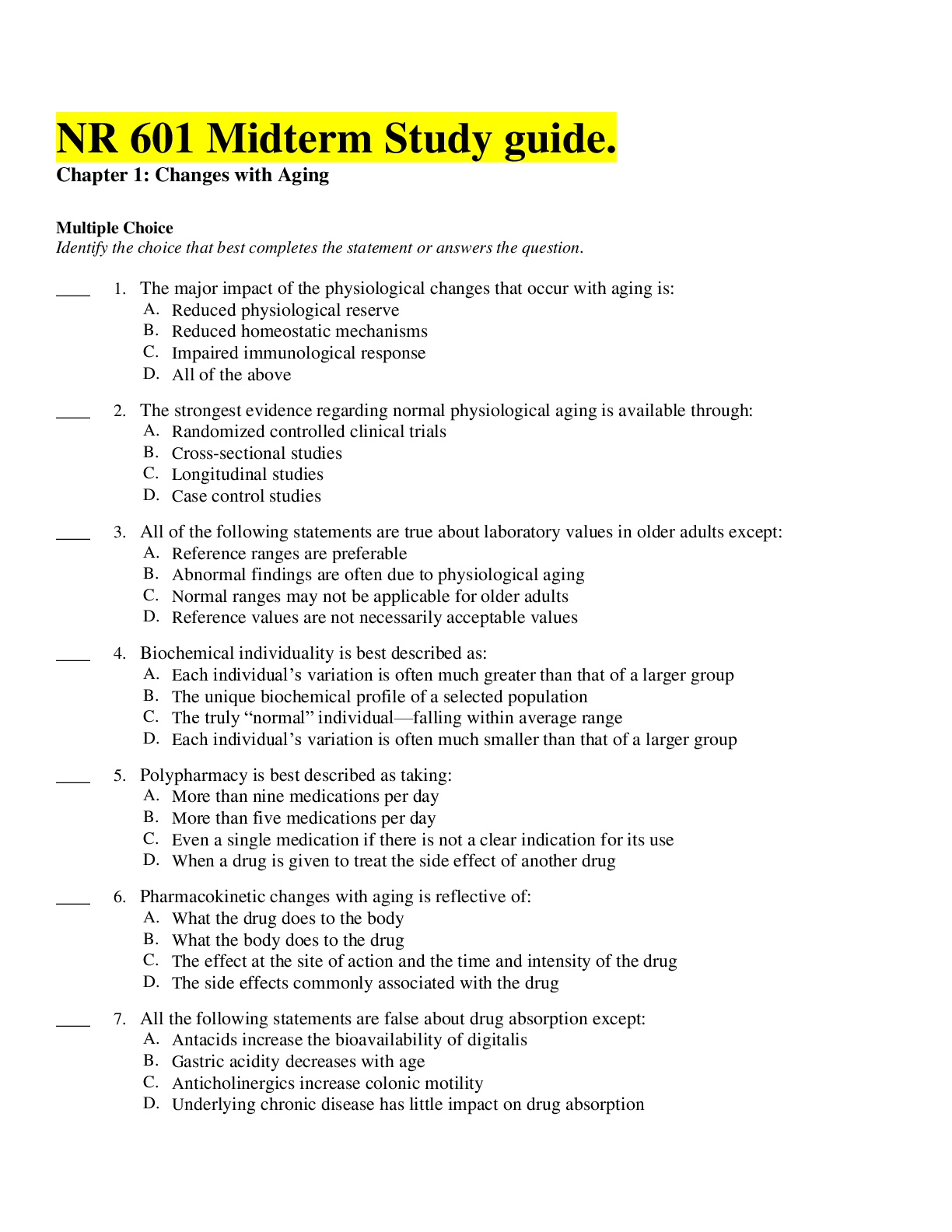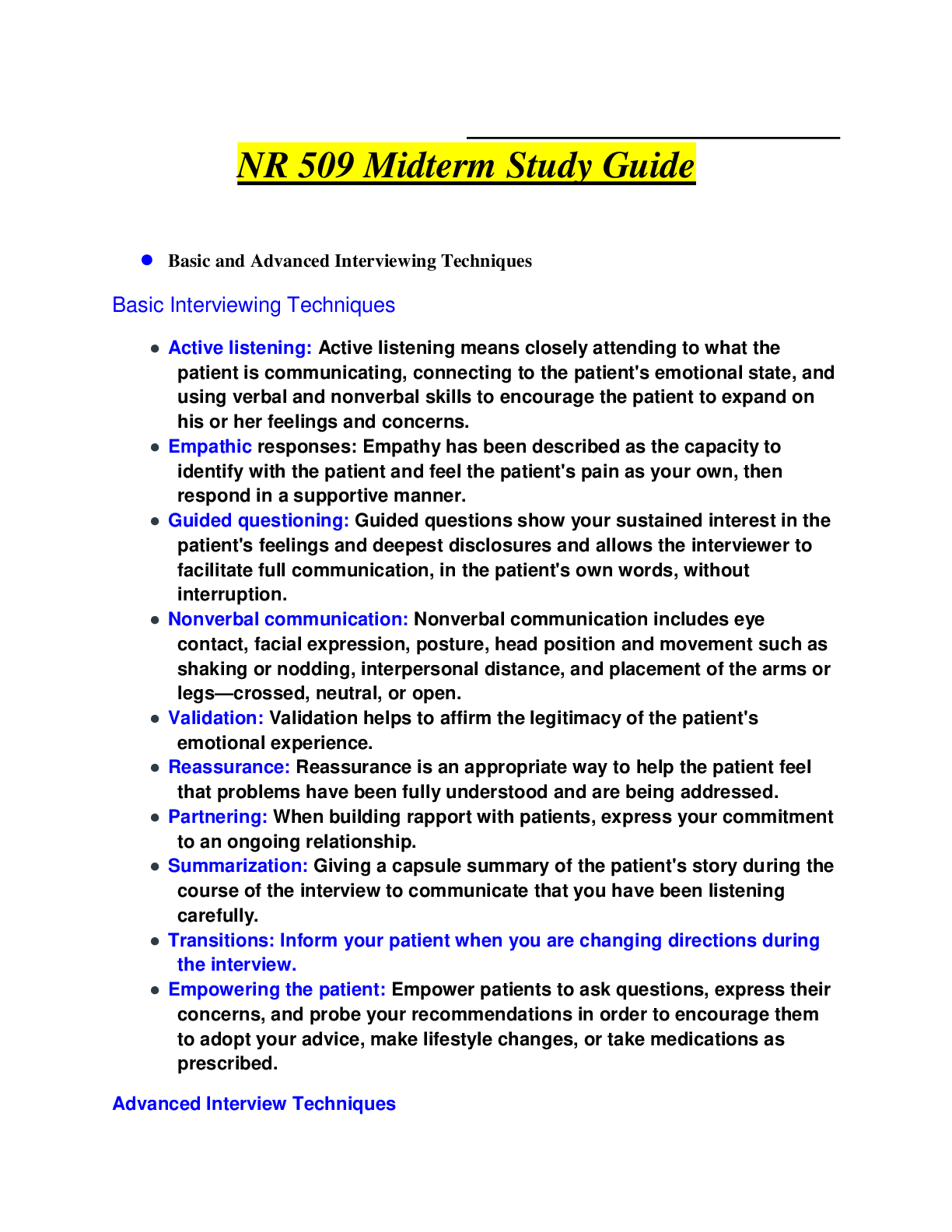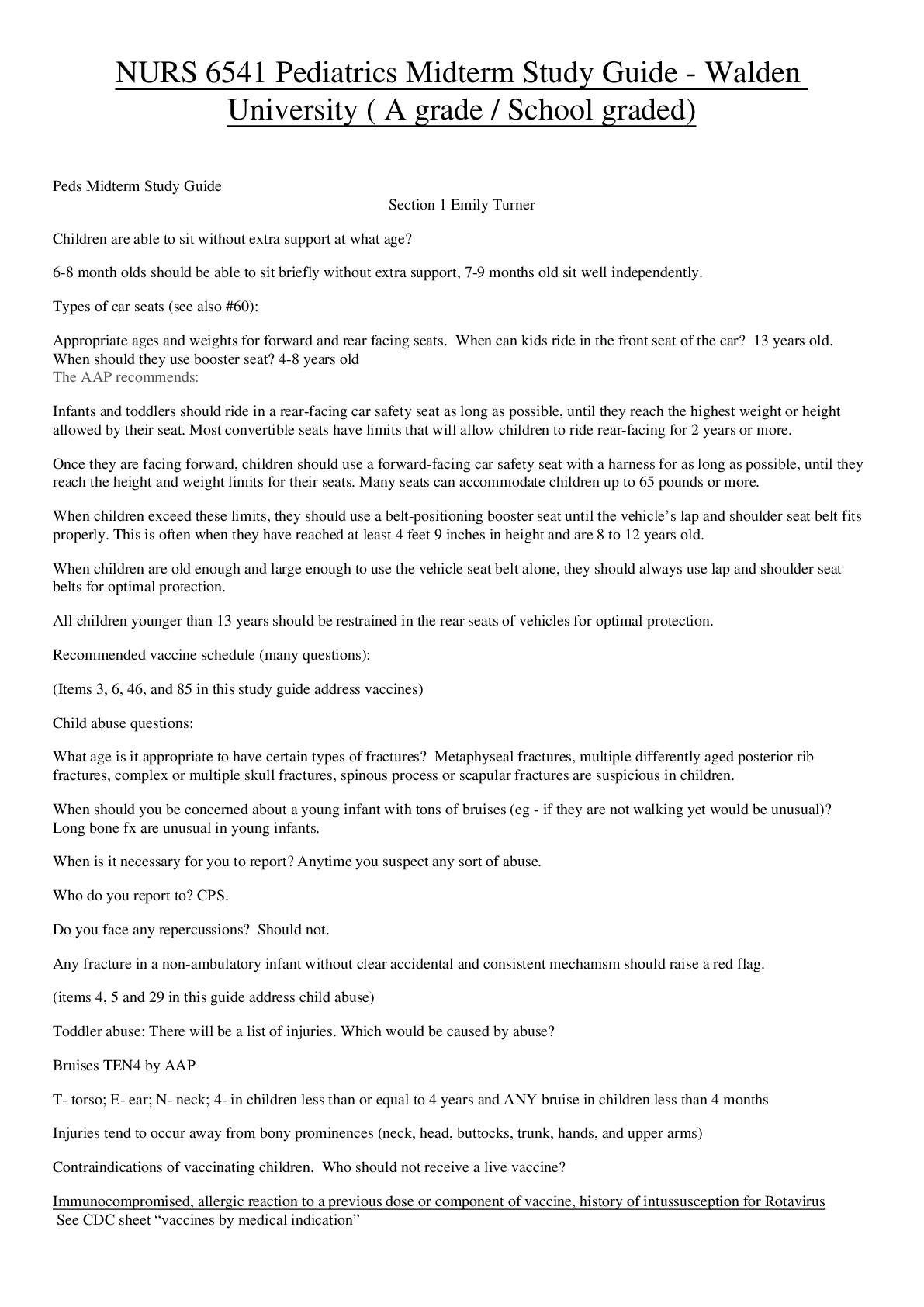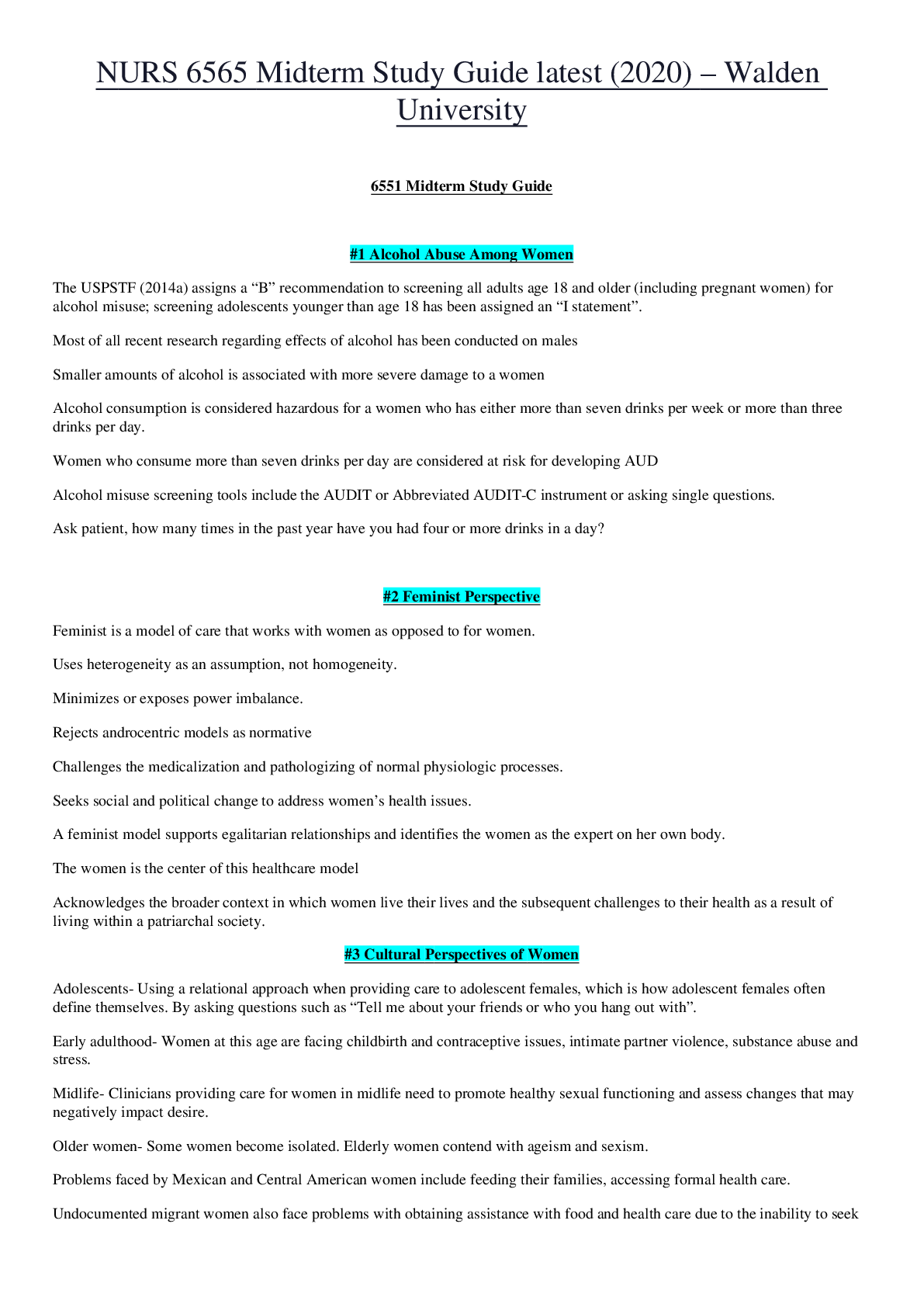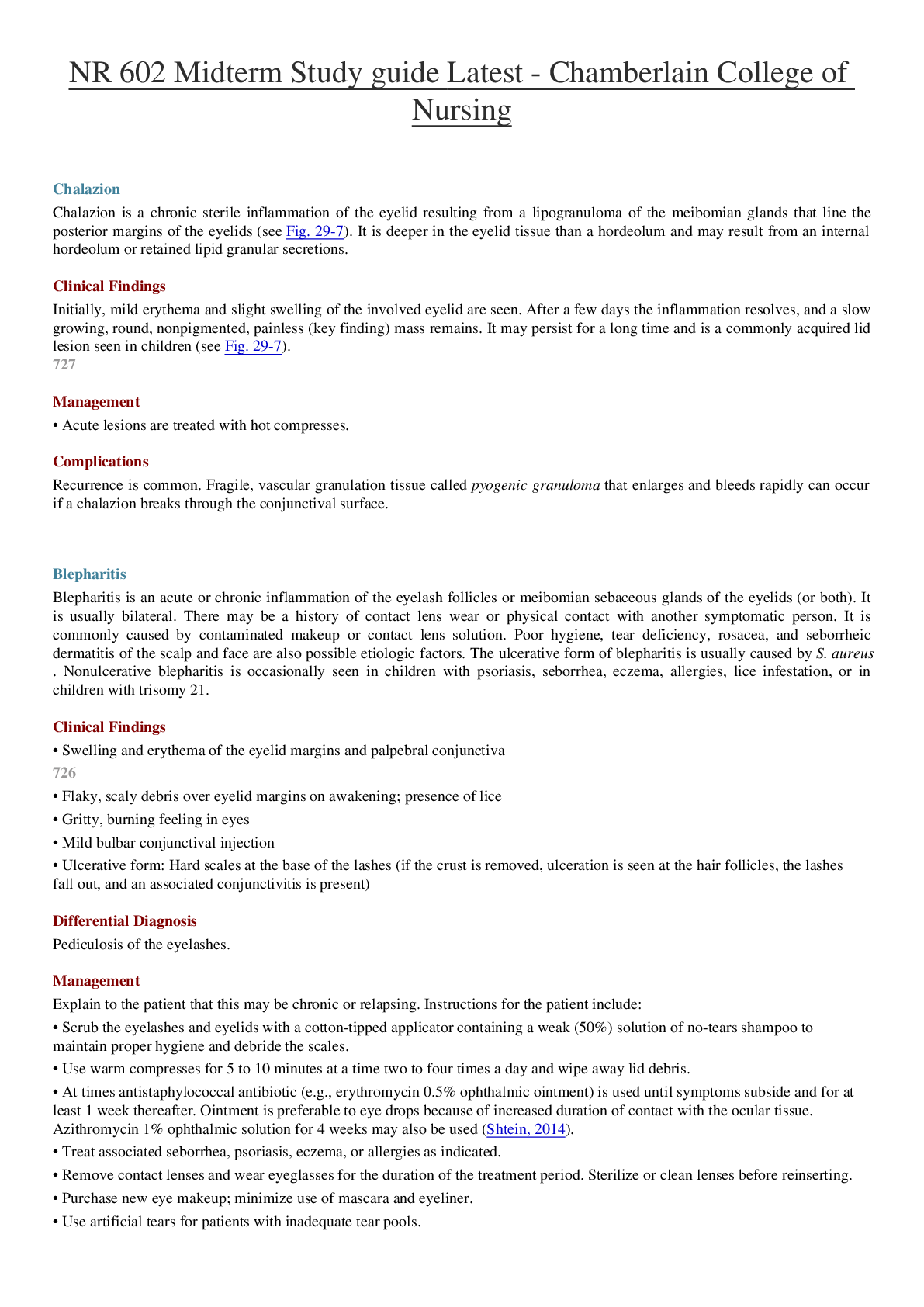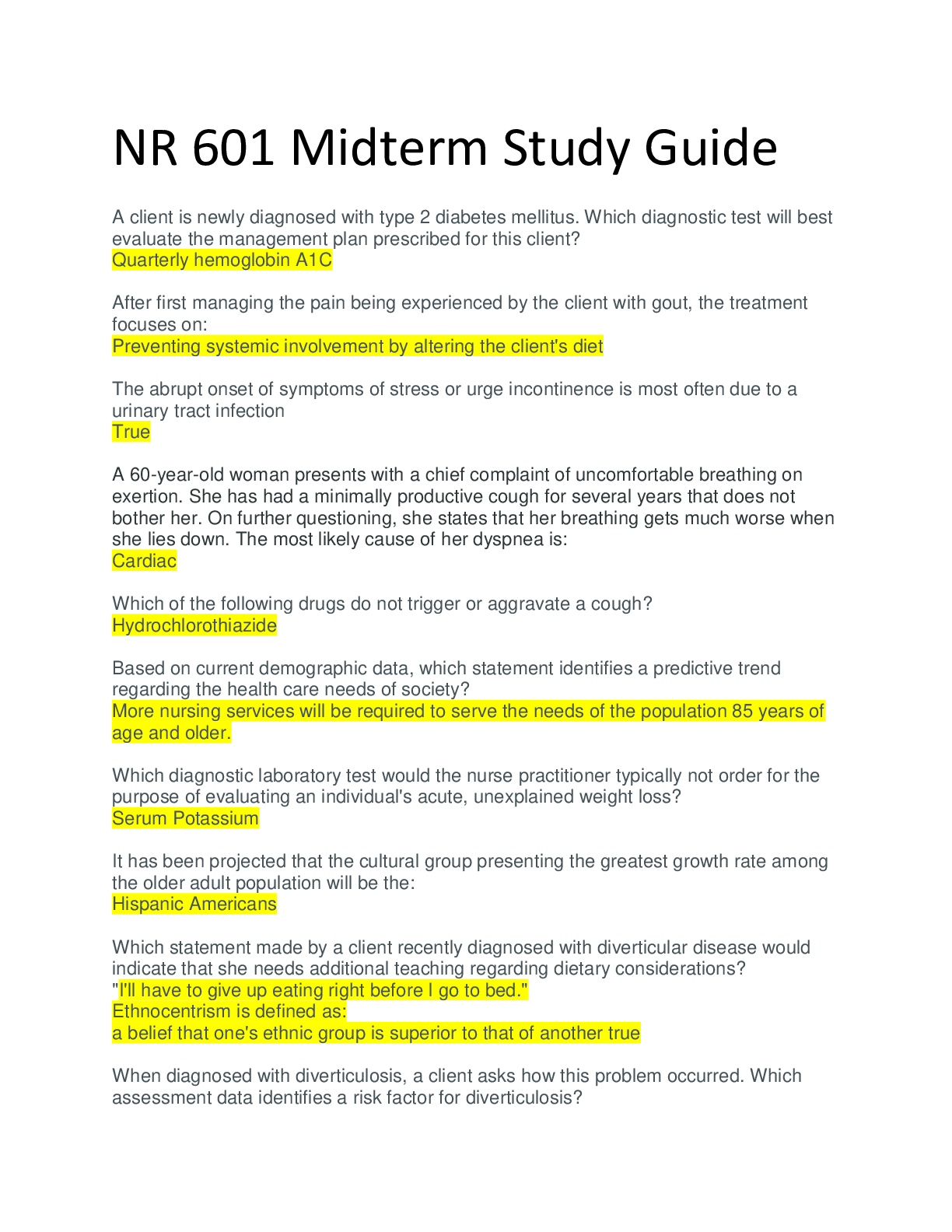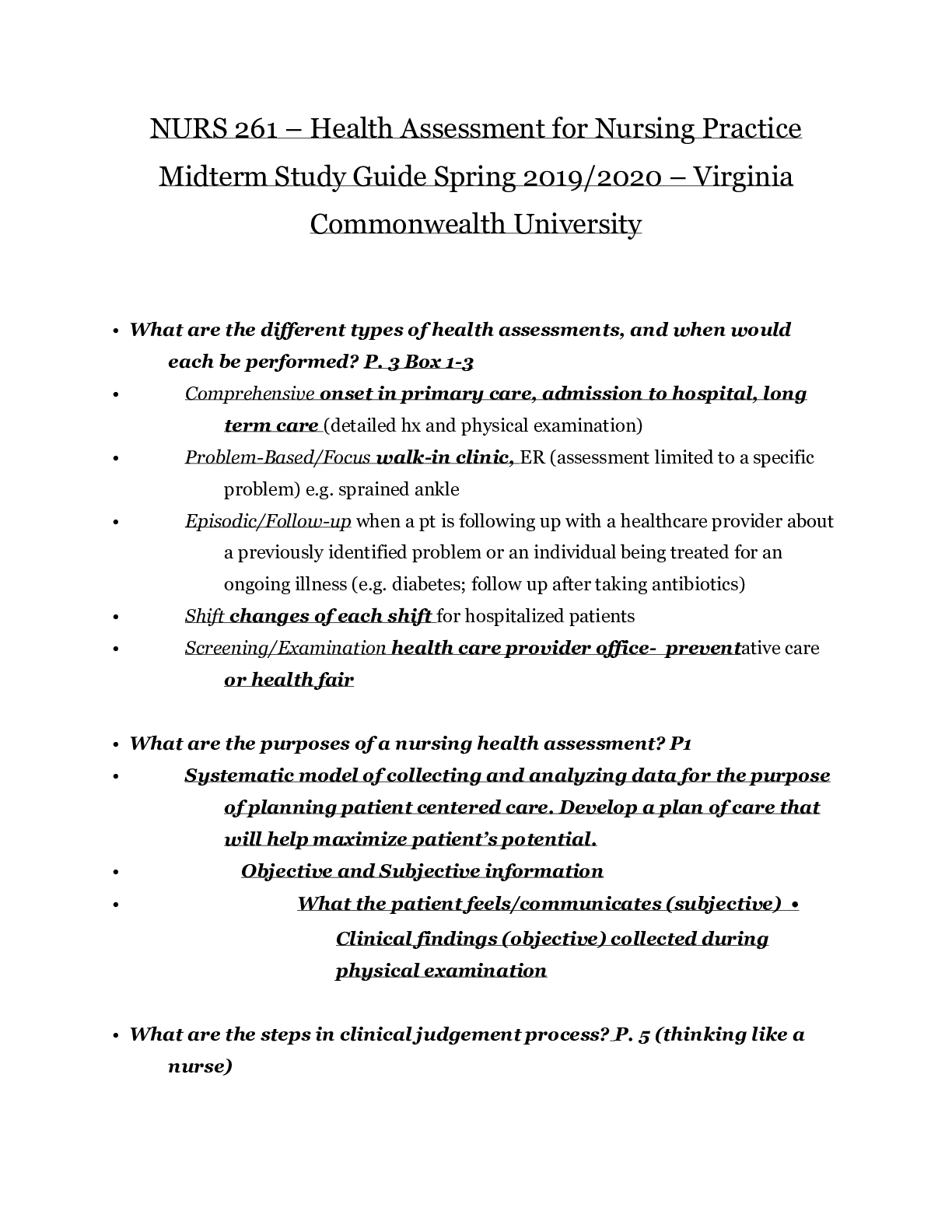Pharmacology > STUDY GUIDE > NURS 6234 Pharmacology for Nursing Midterm Study Guide Spring 2022 (All)
NURS 6234 Pharmacology for Nursing Midterm Study Guide Spring 2022
Document Content and Description Below
How do you choose a drug to treat any given problem? What are the goals of therapy? Rational drug prescription process: - Define the patient's problem: assess, working and differential diagnosis, u... se diagnostic tests, etc.Defining the patient’s problem(s)- making the diagnosis - Specify therapeutic objective: cure disease vs. relieve symptoms vs. replace deficiencies (insulin) vs. long-term prevention goals of medication treatment can be curative, relief of symptoms, to replace deficiencies, to prevent long term disease, to treat pain and/or inflammation, or the objective may be palliative. - Collaborate with the patient - Choose treatment: use evidence-based guidelines, individualize to patient, consider pharmacokinetics and pharmacodynamics. Choosing the treatment will be by using evidence-based guidelines to identify appropriate pharmacological interventions, then individualizing the treatment to the patient. The text outlines a number of things to consider when making your choices. - cost-effectiveness (novice- analytical, step-by-step decision making) (experienced providers use experience and pattern, more systematic with complex patients - Pharmacodynamic factors: ease of titration, therapeutic index (narrow index is harder to manage while wide index is safer with less monitoring involved) - Pharmacokinetic factors: distribution (BBB) CYP450, renal elimination, dose-concentration curve, half-life - Therapeutic factors: evidence (clinical trials, clinical practice guidelines, systematic reviews) random control trials (extrapolate with caution), NNT (numbers needed to treat), NNH (numbers needed to harm - Safety: safety profile: teratogens, liver/renal disease, drug allergy, medwatch report, FDA advisories - Patient factors: previous ADR, health beliefs, current drug therapies (interactions), age, pregnancy - Provider factors: NPs need to be familiar with the formularies they are allowed to prescribe - Educate the patient about the medication - Poor adherence = worsening disease, hospital admissions, death - Education/ Instructions needs to be at 5th or 6th grade level, plain language - Include purpose, instructions (how to take), benefits, side effects, and potential adverse effects that they need to notify you about. - Passive: patient educated on expected outcome and instructed to contact provider - Active: follow up labs/monitor therapeutic effectiveness - Monitor effectiveness. This may be just making the patient aware of the expected outcome and instructing them to notify you if it doesn’t work; you may have them come back for follow up (BP management, depression meds, etc); or lab tests may be needed (TSH, Lipids, electrolytes, etc) - The treatment is started by writing or electronically sending the prescription, making sure that all of the legal requirements are included. Also, you want to consider any barriers to compliance - cost, side effects, too frequent dosing (difficult to comply with). I Can PresCribE A Drug Indication Contraindications Precautions Cost/compliance Efficacy Adverse effects Dose/duration/direction Nurse practitioner practice issues. - Federal establishes which drugs require prescription, State law gives authority to prescribe. - Each state has practice acts that set forth licensing requirements for health professionals, define scope of practice and prohibit unauthorized practice. - There is some variation from state to state regarding prescribing laws. The state Boards of Nursing typically regulate nurse practitioner practice, and the laws regarding prescriptive authority are determined by each state’s legislature. - Ethical issues: informed consent, prescribing for family or friends, sale of pharmaceuticals and supplements - Prescriber issues: pressure to prescribe, enabling, dealing with misuse (communicate and confront), systemic solutions: careful documentation, EMR, use of prescription drug monitoring program - Nurse practitioner prescriptive authority is regulated by each State Board of Nursing. Some states grant prescriptive authority to NPs solely through the BON (plenary authority), whereas others require a joint process through a board of medicine or pharmacy. Pharmacodynamic and pharmacokinetic principles. How do they affect drug selection? Pharmacodynamics: what the drug does to the body. the effects of drugs and the mechanism of their action. It is the study of the relationship between the concentration of a drug and the response obtained in the patient; in other words, how the drug acts at various sites in the body. Most often, the sites of action are receptors on the specific cell, tissue, or organ, where the drug initiates a chain of biochemical events that culminates in changes in physiologic functioning of the cell, or the activity of an enzyme or of an intracellular protein. Pharmacokinetics: what the body does with the drug. pharmacokinetics refers to the movement of any drug going into, through, and out of the body. Absorption, Distribution, Metabolism, Excretion. “Pharma” refers to drugs and “kinetics” refers to motion. What the body does to a drug. There are four pharmacokinetic phases: absorption, distribution, biotransformation (metabolism), elimination (excretion). - Absorption: Is the process through which a drug leaves the site of administration and moves into the systemic circulation. The rate of absorption can be influenced by a variety of factors including dosage form, route, patient’s age, disease states, etc. The size of the molecule also affects absorption. The way in which medications are presented to the body affects speed, extent and duration of drug absorption. - IV greatest absorption, - PO most common and convenient – breakdown and absorption take time - topical, inhaled, ophthalmic - Bioavailability: administered dose dissolved, absorbed or survives liver metabolism, only a fraction of an administered dose makes it to the bloodstream. The percentage that makes it to the bloodstream is called bioavailability of dosage form. - Distribution: the process by which a drug diffuses or is transferred from intravascular space to extravascular space (body tissues). Drugs are distributed through the circulation to the tissue- binding sites, the sites of action and organs of elimination. Factors that affect distribution include blood flow, protein binding, tissue binding, and solubility. Only free or unbound drugs are active, so drugs that are bound to protein are not biotransformed or excreted. Patients with low serum albumin levels may have difficulty transporting some protein bound drugs and they may have exaggerated amounts of unbound drugs. The capillary networks in the placenta and the blood-brain barrier act as barriers to the distribution of some drugs. Nonionized, lipid-soluble drugs readily pass through the placenta. Highly ionized and protein-bound drugs cannot enter the CNS. - the way the drug moves throughout the body – blood stream and passive diffusion, distribution can also be promoted or limited by the presence of transport systems that may selectively transport or exclude drugs based on size, charge or chemical structure. Drugs can only be effective if they reach site of action in adequate concentrations - Drugs can passively diffuse most readily when they are small and uncharged and also have the right balance between water and lipid solubility. - Protein binding: drugs often bind to plasma proteins to be distributed thru bloodstream. Albumin is one plasma protein that can affect drug distribution if patients' albumin is low. - Transporters: membrane proteins that facilitate the movement of molecules across cell membranes. - Volume distribution (Vd): hypothetical value that reflects the volume in which a drug would need to be dissolved to explain the relationship between dosage and blood levels. - Metabolism or Biotransformation: Drugs are chemically altered by enzymes into metabolites. Metabolites can affect the onset of action, duration, and toxicity of a drug. If drugs are lipid soluble, weakly acidic or basic, there have to be some chemical reactions in the body to make the drug more water soluble so that it can be excreted by the kidneys. Most of the biotransformation of drugs occur in the endoplasmic reticulum of liver cells. The liver has an abundance of enzymes that biotransform drugs. It is also the first organ that the substance that has been absorbed in the gut passes through. This is where you get “first pass metabolism” which I’ll mention below. [Show More]
Last updated: 1 year ago
Preview 1 out of 39 pages
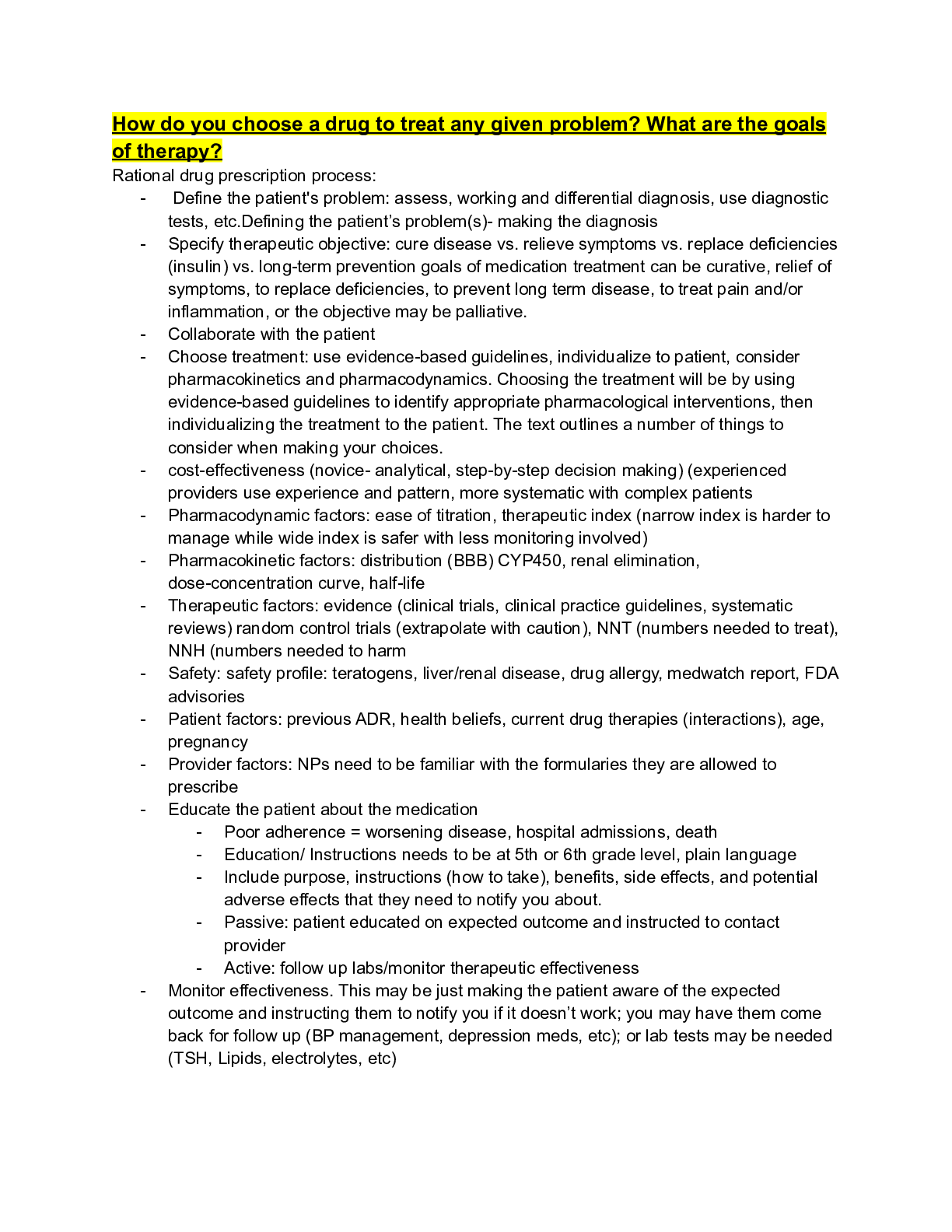
Buy this document to get the full access instantly
Instant Download Access after purchase
Add to cartInstant download
We Accept:

Reviews( 0 )
$12.50
Document information
Connected school, study & course
About the document
Uploaded On
Oct 17, 2022
Number of pages
39
Written in
Additional information
This document has been written for:
Uploaded
Oct 17, 2022
Downloads
0
Views
81


